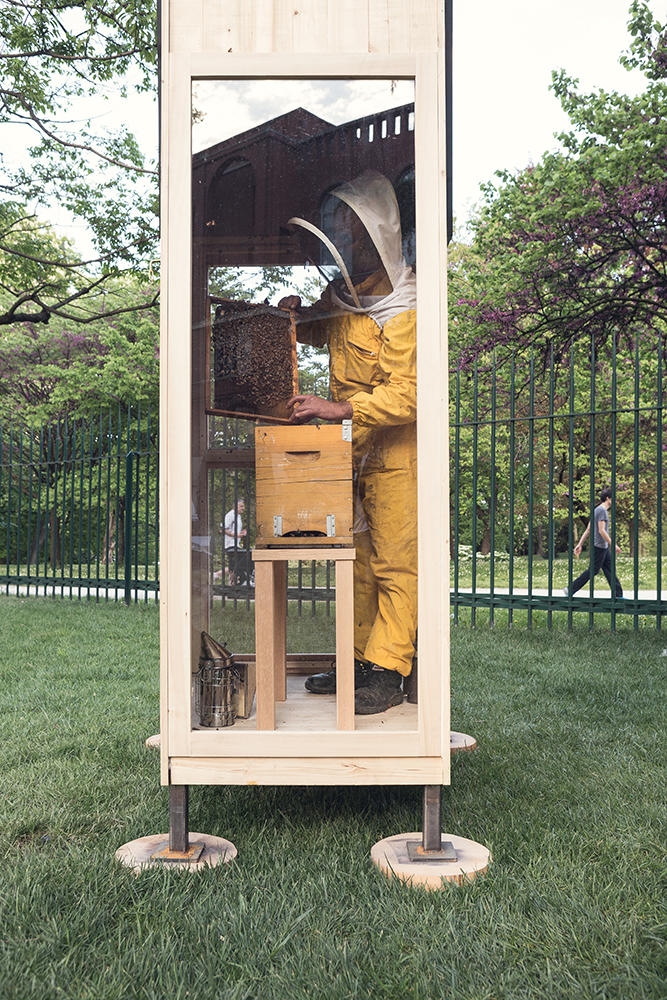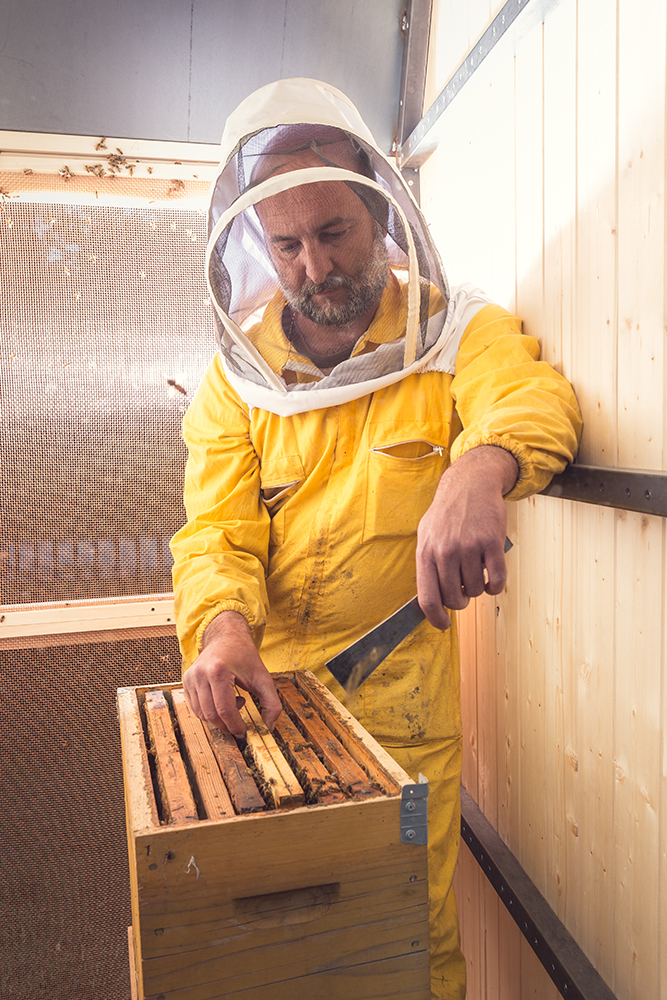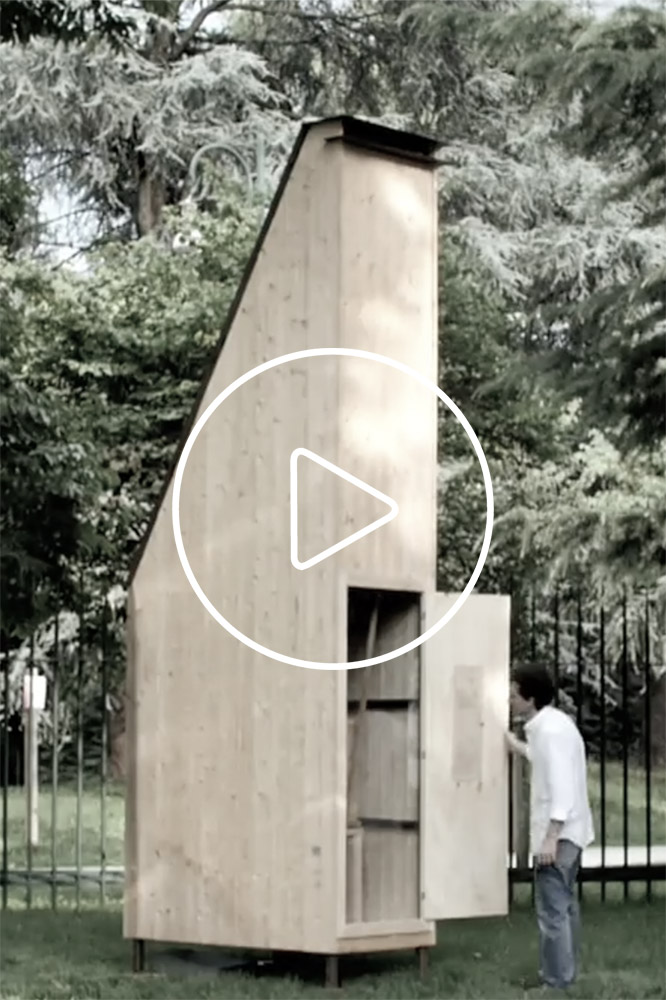Honey factory
2015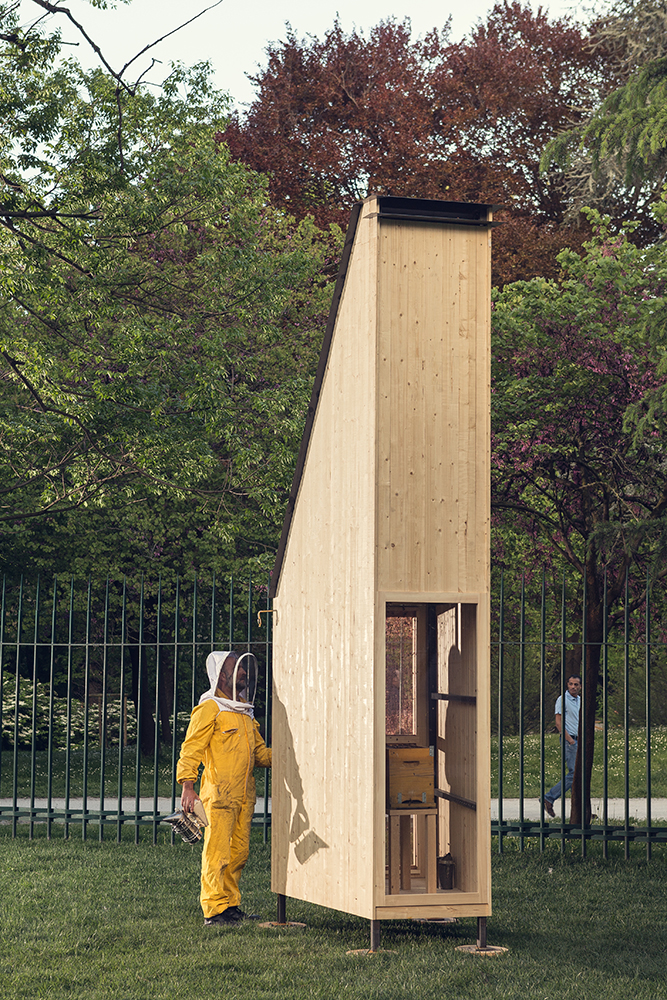
Honey factory is a Micro-architecture for urban bee-keeping, which contains the traditional beehives and protects the necessary equipment of its processing, but most of all, it’s an urban information point regarding the urgent topic of the decline of bees and the consequences of this phenomenon.
The world of bee-keeping is highly variegated. On one hand there are producers focused on zero food miles, and on the other there are those who have an educational mission and want bees to be closer and part of the urban ecosystem. This project follows the lines of the latter group of bee-keepers but with new parameters. The urban beehives currently in use, in fact, are all made to be installed on roofs of the city and far away from people.
HoneyFactory is designed to bring bees closer to people. Just by looking closely at these extraordinary insects people can empathize and lose fear.
The big "chimney" which is a clear sign of the project and the real innovation, helps to keep the entrance of bees as far as possible from children and possible vandalism, and actually the so-called "flight step" is usually placed a few centimeters from the ground, but in this case it’s 4.5 meters high. Furthermore, a glass door protects the beehives meanwhile still allows observation from a very close distance (through a window) of the encoded movements and the mysterious "bee dancing".
Thanks to the collaboration with Mauro Veca, a professional beekeeper and urban farmer based in Milan, I was able to test the function of HoneyFactory, starting from accurate and reliable information. After presentation at the Expo2015 in Milan, Honey Factory has been put in use in the garden of the Triennale Design Museum in Milan (still in full operation), in the Children Gran Park in Seoul (4 units in full operation), and currently a worldwide distribution project is in progress.
Since 2015, the Veterinary Faculty of Milan has been researching by taking advantage of the easy accessibility of Honey Factory. They started a project with the Municipality of Milan for environmental bio-monitoring by studying the micro-dusts (Pm10) easy to find on the bees' hairs. The collected data will be published in the coming months with very interesting and unexpected results.
In November 2017 HoneyFactory was chosen to represent the Global Goals drafted by the United Nations in 2015. There are 17 Global Goals and my project will be Ambassador of Goal No. 11: Sustainable Cities and Communities.
Lavazza is supporting the United Nations in this ambitious project and for this reason they are going to present the next 2018 calendar (Portraits by Platon) entirely dedicated to this theme in order to spread these urgent goals as much as possible in the world.
The world of bee-keeping is highly variegated. On one hand there are producers focused on zero food miles, and on the other there are those who have an educational mission and want bees to be closer and part of the urban ecosystem. This project follows the lines of the latter group of bee-keepers but with new parameters. The urban beehives currently in use, in fact, are all made to be installed on roofs of the city and far away from people.
HoneyFactory is designed to bring bees closer to people. Just by looking closely at these extraordinary insects people can empathize and lose fear.
The big "chimney" which is a clear sign of the project and the real innovation, helps to keep the entrance of bees as far as possible from children and possible vandalism, and actually the so-called "flight step" is usually placed a few centimeters from the ground, but in this case it’s 4.5 meters high. Furthermore, a glass door protects the beehives meanwhile still allows observation from a very close distance (through a window) of the encoded movements and the mysterious "bee dancing".
Thanks to the collaboration with Mauro Veca, a professional beekeeper and urban farmer based in Milan, I was able to test the function of HoneyFactory, starting from accurate and reliable information. After presentation at the Expo2015 in Milan, Honey Factory has been put in use in the garden of the Triennale Design Museum in Milan (still in full operation), in the Children Gran Park in Seoul (4 units in full operation), and currently a worldwide distribution project is in progress.
Since 2015, the Veterinary Faculty of Milan has been researching by taking advantage of the easy accessibility of Honey Factory. They started a project with the Municipality of Milan for environmental bio-monitoring by studying the micro-dusts (Pm10) easy to find on the bees' hairs. The collected data will be published in the coming months with very interesting and unexpected results.
In November 2017 HoneyFactory was chosen to represent the Global Goals drafted by the United Nations in 2015. There are 17 Global Goals and my project will be Ambassador of Goal No. 11: Sustainable Cities and Communities.
Lavazza is supporting the United Nations in this ambitious project and for this reason they are going to present the next 2018 calendar (Portraits by Platon) entirely dedicated to this theme in order to spread these urgent goals as much as possible in the world.




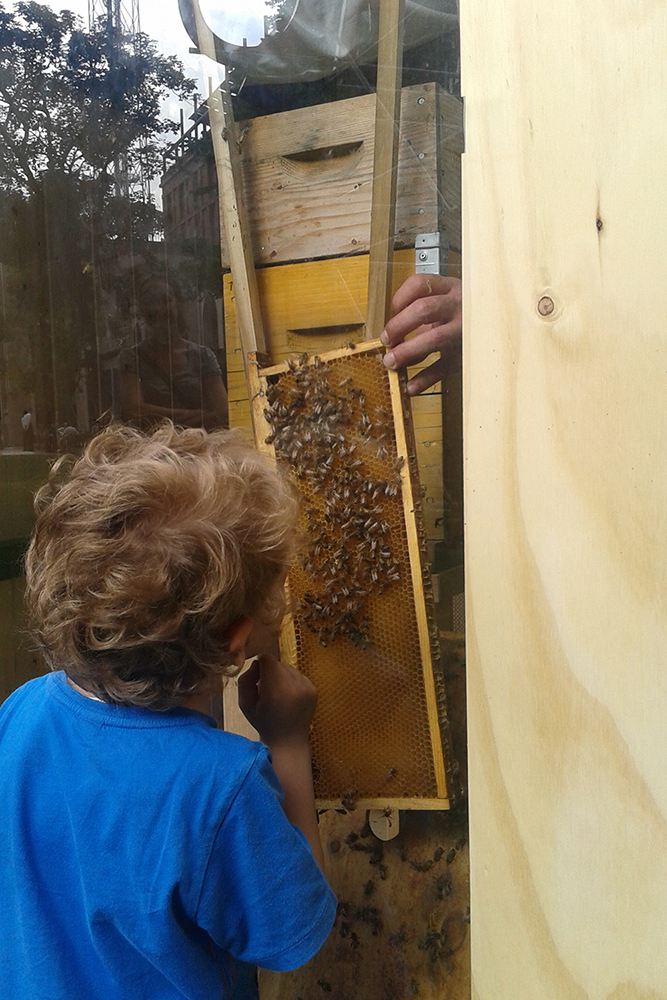
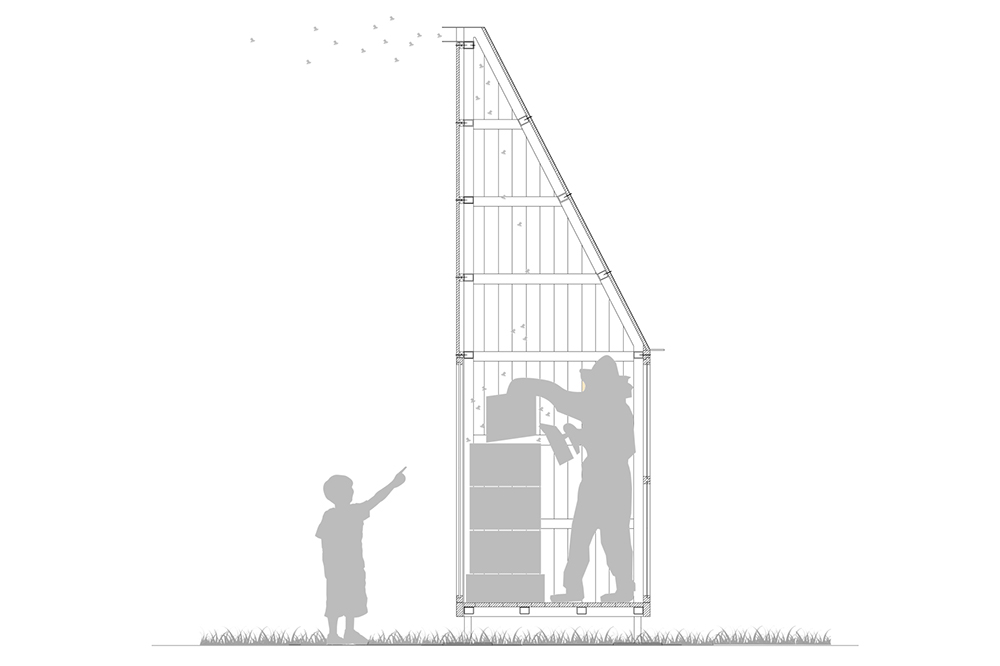
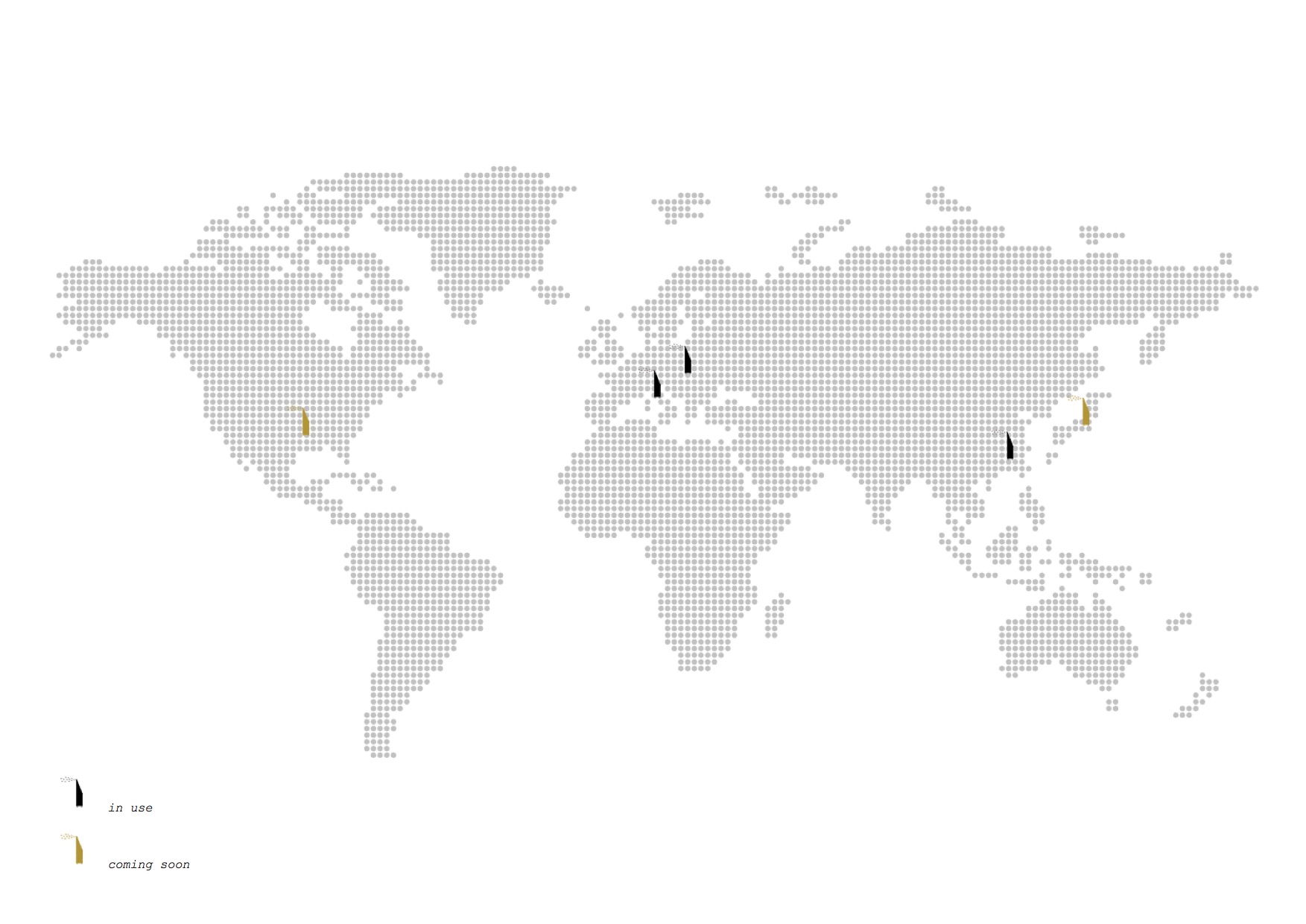

Making of
![]()

Photo credits: Delfino Sisto Legnani



